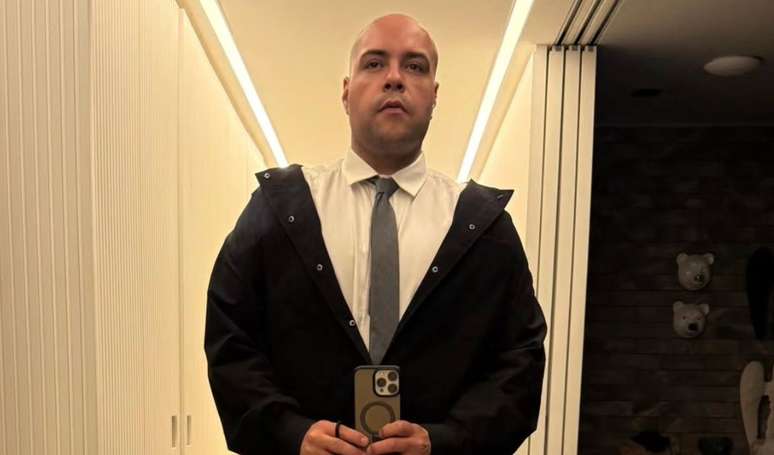Few things in motherhood will raise more expectations than the answer to this question. If your baby sleeps well from the first few weeks, you may have no idea how lucky you are. Only those who face interrupted sleep night after night – several times during the night – and the baby’s crying know how much it costs to their health not to sleep. You were expecting this to happen a long time ago, but so far the baby’s sleep hasn’t hit the pace yet …

Milestones of sleep improvement
First of all, they said that at 4 months the sleep of the little ones begins to regularize. It didn’t happen. Then they said that at 6 months he would sleep better. Then came 6, 7, 8 months and nothing. You were looking forward to reaching the 1 year milestone, but it looks like it hasn’t been this time yet. Did they lie to you? Not really.
In these stages, babies usually improve their sleep mechanism a lot, sleeping more hours in a row. But not all are the same – and not a few get to 1 year and 6 months sleeping at least six hours in a row. The good news is that doctors usually indicate a safe age for a baby to sleep through the night – at age 3, magic happens. If not, it’s time to see a sleep specialist.
Why isn’t my baby sleeping?
Babies are not born knowing how to sleep naturally. They need to learn. And there are some factors that help regulate the whole process.
Up to 3 months, a baby cannot breastfeed much and wakes up 3 to 5 times at night to breastfeed. Furthermore, before 4 months, it produces little melatonin, the sleep hormone that regulates the biological clock and therefore does not know the difference between day and night. This adjustment should take place within 6 months, so this is also a key stage in the sleep process.
From that age, a baby can sleep through the night – and that can mean sleeping continuously for six to eight hours. Also, food introduction begins at this stage, and solid food tends to satisfy hunger for a longer time. Studies show that, at this stage, at least half of children are already able to sleep at night in the morning.
At 1 year, the expectation is that he will sleep 10 to 12 hours a night and that he already knows that the night is for sleeping. Even if he already sleeps well, that doesn’t mean he will always be like this. Growth spurts and developmental leaps often ruin a baby’s sleep routine – and there are many in the first couple of years. Teething can also disturb peaceful sleep. Prepare for the backward steps.
Do I let the baby cry?
Some of the famous methods of getting babies to sleep include letting the baby cry until exhaustion. It also solves one problem, but it can create another: sending the message that no matter how much your child cries, no one will help or will be there for him. Sounds a little cruel, right?
There are techniques that also allow some crying, but more controlled: wait five minutes before going to the crib, then ten and so on. Again, it is a form of crying and not all parents will feel comfortable doing it.
More humanized methods
Other methods suggest that parents comfort their baby immediately, but without taking him out of the crib. And that, progressively, move away from there. This requires a lot of willpower to get up countless times, as often as necessary.
There are those who prefer to share a bed, for the convenience of not having to get up to eat and cry. The topic is controversial. Officially, the American Academy of Pediatrics and Brazilian Society of Pediatrics do not recommend the practice, but they do suggest that the baby sleep in the parent’s room, in a separate crib, during the first year of life – as a way to reduce sudden death. in the first year of life.
Each family must find the path that best suits them. But beyond any technique, some tips for good sleep are universal. See what you can do next.
What can I do to get my child to sleep?
- If your baby is still breastfeeding, try breastfeeding just before bedtime, around 11pm or midnight. So he tends to wake up a little later and get more hours of uninterrupted sleep.
- Don’t let your baby fall asleep while breastfeeding. He may associate breast or bottle as needed to fall asleep and will not be able to sleep again when he wakes up at night. One way to do this is to place the feed at the start of the sleep ritual.
- Avoid swinging to get yourself to sleep. We know that it is very difficult not to make this “mistake”, but the child will also associate the lullaby with falling asleep and will ask for it at dawn. You can also start the ritual by rocking him, but the ideal is to always put him in the crib while he is still awake.
- Babies may be surprised if they fall asleep in one place and wake up in another. Therefore, always put him awake in the crib and avoid having him sleep in a different place and then carry him to bed.
- Implement a strict planning routine. She should have dinner at least two hours before going to bed. Wake him up at his usual time the next day.
- Children must be in bed by 20:00 at the latest. The truth is that, biologically, they are programmed to be asleep before then and would ideally be in bed until 7pm. But since this is nearly impossible in our modern life, it’s okay to go to bed a little later to give yourself time to interact with your parents a little more.
- Implement a sleep ritual or change your routine a bit. The classic is the bath, the massage, the pajamas, the brushing of the teeth, the history, the relaxing music. Test what makes the most sense to you. The important thing is not to shake the baby two hours before he goes to bed and that means: no active games, no screens, no lights.
- Invest in massage! Studies have shown that babies who receive a relaxing massage sleep better and are less sick.
And more:
Do I want to know more? Subscribe to the newsletter of Baby Home and get more tips each week on how your baby is developing. It’s fast and free.
+The best content in your email for free. Choose your favorite Earth Newsletter. Click here!
Source: Terra
Benjamin Smith is a fashion journalist and author at Gossipify, known for his coverage of the latest fashion trends and industry insights. He writes about clothing, shoes, accessories, and runway shows, providing in-depth analysis and unique perspectives. He’s respected for his ability to spot emerging designers and trends, and for providing practical fashion advice to readers.




![New York Special: Why You Won’t See It Anymore [Spoiler] in the series? New York Special: Why You Won’t See It Anymore [Spoiler] in the series?](https://fr.web.img6.acsta.net/img/fc/a2/fca242c7befc75467758596593c0656d.jpg)


